
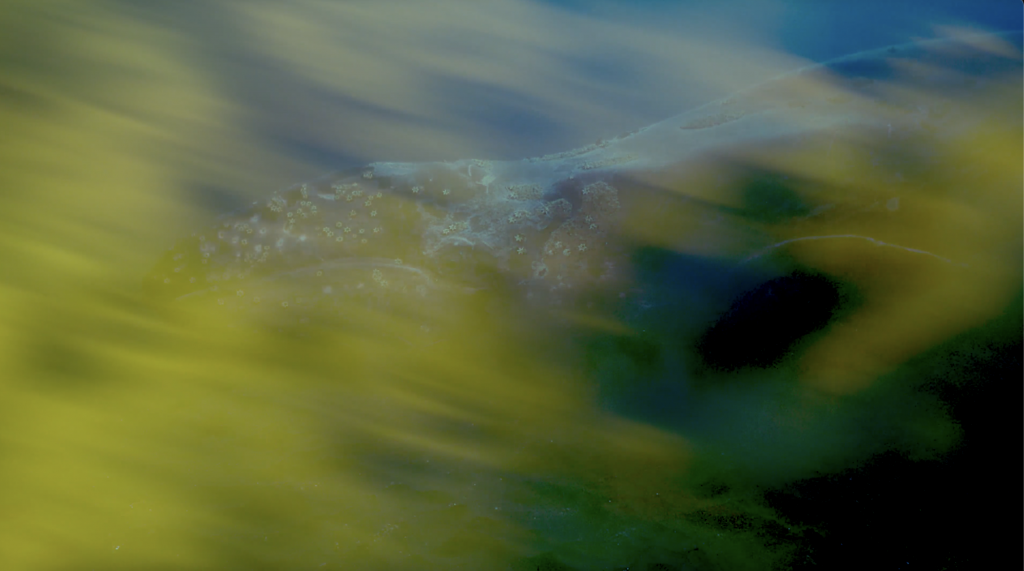



The whale fall event is a process where whales descend to the ocean floor after their death. For millennia, this has been a critical part of the life cycle of oceans – ecosystems form around the whale fall, feeding and thriving off its flesh and remains. Creatures that are part of the ecosystem include bacteria mats, vesicomyid clams, galatheid crabs, polynoids, and a variety of other invertebrates. In recent times, pollution has had devastating effects on whales, who are said to be the most polluted animals on the planet. How do these creatures survive in such polluted conditions? The fall of this polluted whale symbolises the fall (or failure) of our society to act on pollution and the human-caused effects of climate change.
Whale Fall was performed in Bremen, 4th July 2021 during Sydney lockdown. It includes an ensemble (6 players), electronics, video, and spoken fragments from trauma induced dreams (performed by Donna Chang). I was given the chance to collaborate with neuroscientists from Cambridge who gave me exclusive access to anonymous dream reports, that coincides with my article and scores about music and dreams: Music in Impossible Spaces and Dream Recorder. Dream fragments are strung together to resemble a speculative experience of a whale.
More broadly, Whale Fall confronts the instability of our ecosystems, comparing the decaying process of a whale carcass as it sinks to the bottom of the ocean, with the moral decay of our society. This idea is transferred to the music as dark spiralling and destabilising granulations of sounds, with falling lines and decomposing sounds, full of violence and hopelessness. The instrumental articulations in the music coalesce in speculative dialogue with the sounds of the bowhead and the minke whale – two highly intelligent and empathetic creatures found in the arctic and subarctic seas who have suffered significantly from commercial exploitation. A whale’s primary way of navigating the world is through sound – spending most their time in darkness, and have some of the widest hearing ranges of any mammal – some species capable of hearing at seismic or hyper-ultrasonic frequencies. They have self-recognition, complex social lives, express empathy, grief, maternal love, and even belong to different cultures. The skin of a whale is very sensitive to touch. Some may think it is tough and thick due to their size but whales are able to sense touch all over their bodies. They experience changes in atmospheric pressure, which helps us to understand their physiology and how their brains are structured to orientate themselves in their environment.
Maurice Merleau-Ponty tells us that when we perceive depth, we are perceiving a sensuous cartography of dynamic relationships that is a mutual envelopment (the intertwining of self in space). They are creatures who are ensouled, and agential – deserving of what we call personhood and sovereignty, mainly as a systemic structure to protect them from us and the tourist mentality of animal objectification. The music starts by simulating ‘acoustical smog’, or underwater noise pollution, which whales are highly sensitive to and had to endure relentlessly throughout their lives. Then, a falling decaying whale as it descends into the depths of the ocean floor. And then, the final section ‘The Infinity Chamber’ imagines an inner ear bone of a whale resting on the seabed, forever listening to the changing acoustics of the ocean.
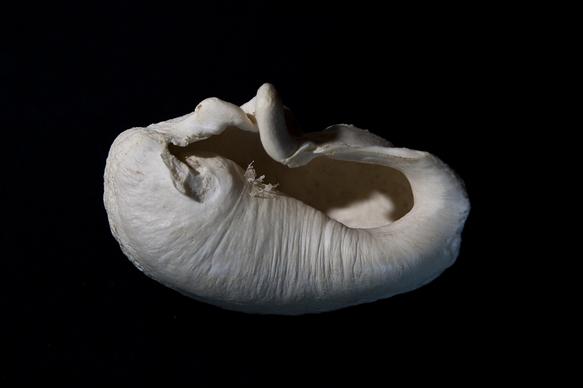
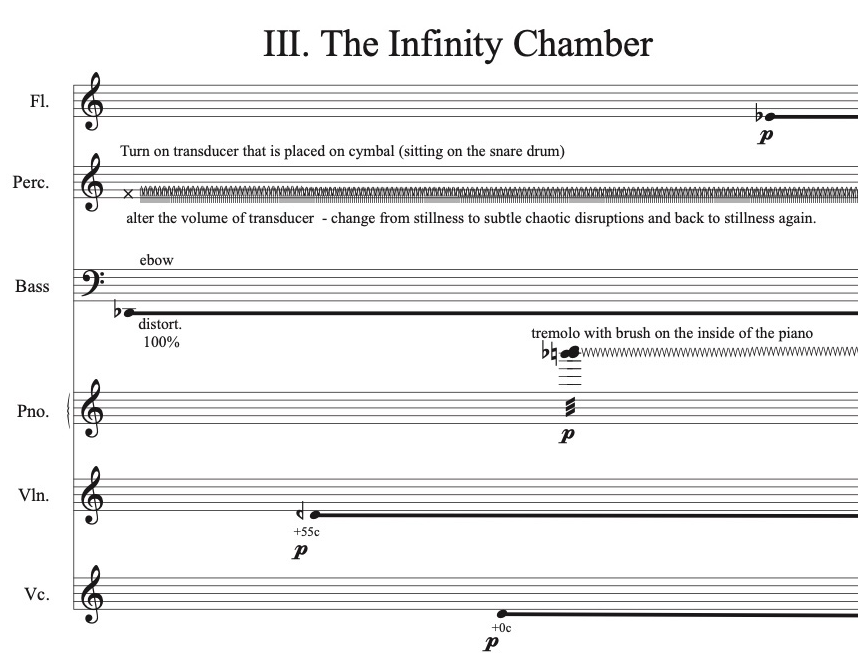
Just by looking at the intricacies of the inner ear I can only imagine how differently they listen. The blue whale has a much larger auditory nerve, which means they are able to do more complex auditory processing. The thicker and firmer the basilar membrane is more attuned to higher frequency hearing. Baleen whales, on the other hand, have exceptionally broad, thin, and elastic basilar membranes. These characteristics contribute to the low frequency hearing range.
The score uses iconography that relates to the difficulties whales face due to climate change. The basis of the work is to derail our ideas of biopolitics, anthropocentric power dynamics, and our domination, ownership, and control over animal life. The use of icons allows for this symbolism to play out in the performers imagination as well as being a practical way for them to categorise and identify repeated musical fragments. By linking the icons to a sequence of actions the musicians were able to group chunks of ideas faster within a sequence. They can also respond to the icons by ‘sensing the ideas’ – by being in touch with their personal response to the icon and its meaning in the world to influence their musical shape and flow, shading of texture, or flexibility of time.
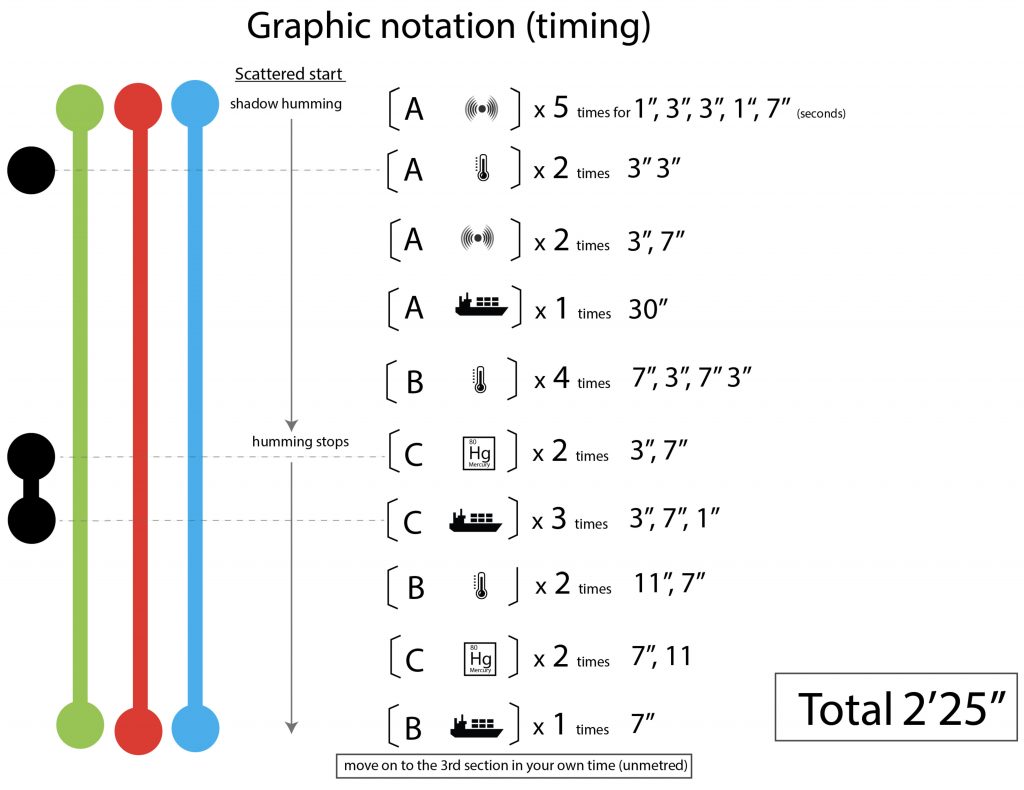
The music is interwoven with sounds of the bowhead whale in the foreground with frequency modulation and the minke whale in the background that sounds like a low ambient rumble. The third section contains a low frequency falling tone of the blue whale. The whale song has lowered in pitch due to climate change so this has also influenced my use of a falling tone in the music. The archival whale recordings have also been detuned. I used a frequency shifter which changes the partials of the recording and gives it a ‘disharmonic’ sound. This is what I mean when I say ‘decomposing sounds’. They are sounds or compositional processes that reflect the decaying or decomposition our environment. The recordings are also low in quality so the sound is naturally muffled and distorted. The sound of water in the recording obscures it further. There is also instrumental acoustic distortion from the heavy bowing and scratch tones from the violin and the cello.
The percussionist also uses a transducer that is placed on a cymbal that is facing upside down. The transducer is amplified and plays the sound of a very low 30 Hz sine-tone with brown noise continually playing as these sounds are effective in vibrating the membrane of the transducer and the cymbal. The bass guitarist uses an electronic distortion pedal and changes the level of distortion throughout the piece. Overall, the ensemble as a organism creates an unsettling, decomposing mesh of sound.
The vocal track speaks the fragments of the trauma induced dreams [3’30”]. An example of the text is as follows:
“And then suddenly… I was falling… There was no light anywhere there was just real… It was like I was plunging into the depths of the ocean… It seemed like a place where the light wouldn’t be able to penetrate… The mist was still around I could still see where I had fallen from… And I was able to float on my back and just see the mist in the sky above me… But it was still indistinct it was still really this dark blurry gray hazy mist around me… I could feel the mist close up around me, it just grew denser and denser… My lungs were becoming quite restricted and it was almost like I was suffocating so at that point I think I decided to dive into the water, deeper into the water… I dived into water and went with this current that was pulling me down.”
(electronics and voice only)
The work also makes a connection to linguistic research into whale vocalisation, such as Zipf’s law, which is about finding the most common used words in a given language. In english they are: “the” “of” “and” “to” “a” “in” “is” “that” “was” “it” “for” “on” “with”. The occurrence of each of these words falls exponentially on a graph – Wikipedia: Zipf’s Law – the first 10 million words of 30 different languages
Whale languages can also be measured using Zipf’s law as they also use common sounds that can be distributed on the logarithmic scale. Baby whales sounds are more unintelligible when compared to adult whales and this shows that their language has syntax. This study of unfamiliar languages can also be applied to untranslated ancient languages and may even help us with to decipher future alien languages. Music could be analysed in this way as well by looking at its spectral features and notation. Not that music has to have a clear syntax as music can have so much variable abstract and subjective meaning that goes well beyond an even distribution of its sonic units. Language and its interpretation is an infinite reciprocal exchange. But it would still be interesting to see how different types of music would visually rank on this scale and how they compare to other forms of non-human communication.
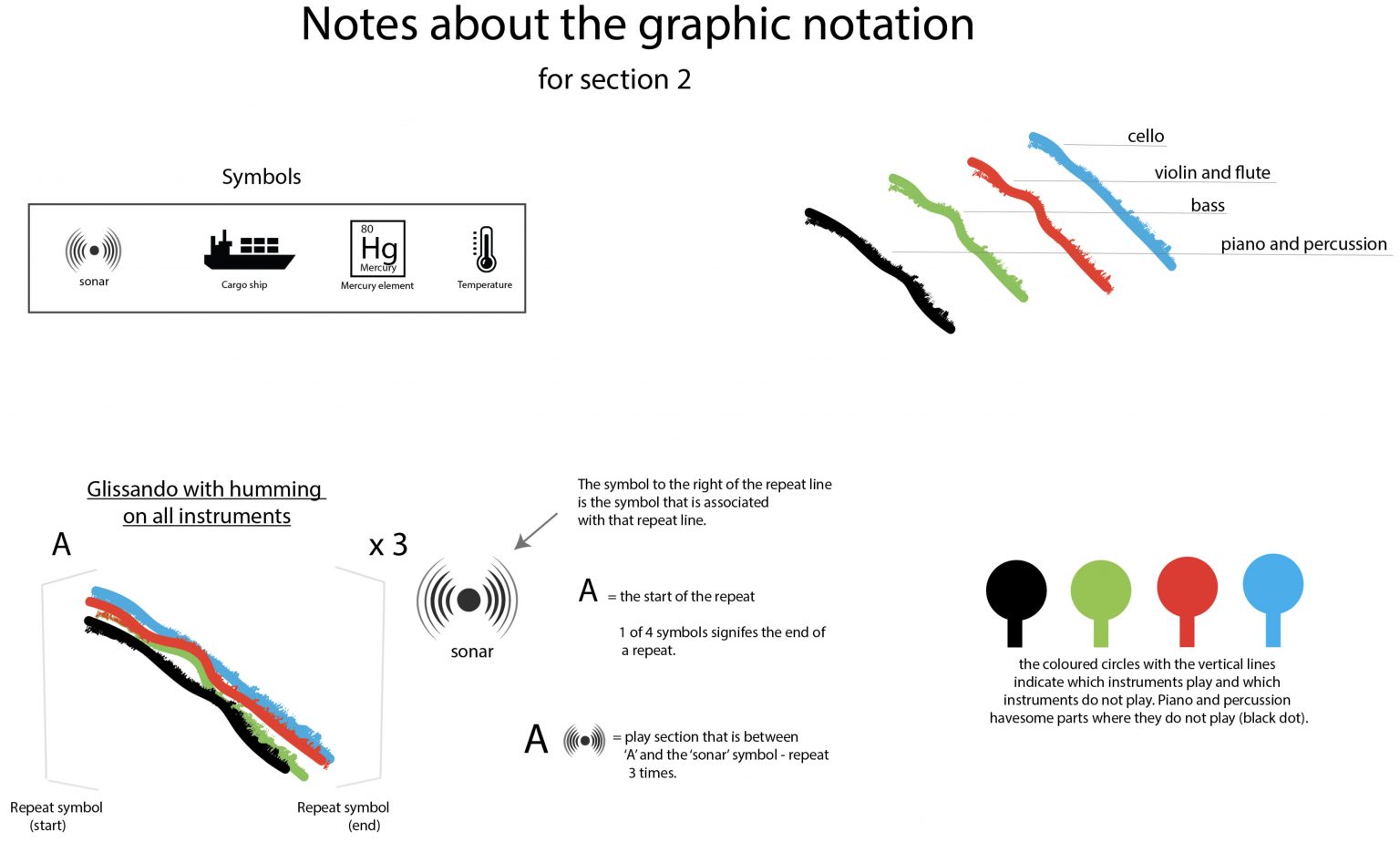
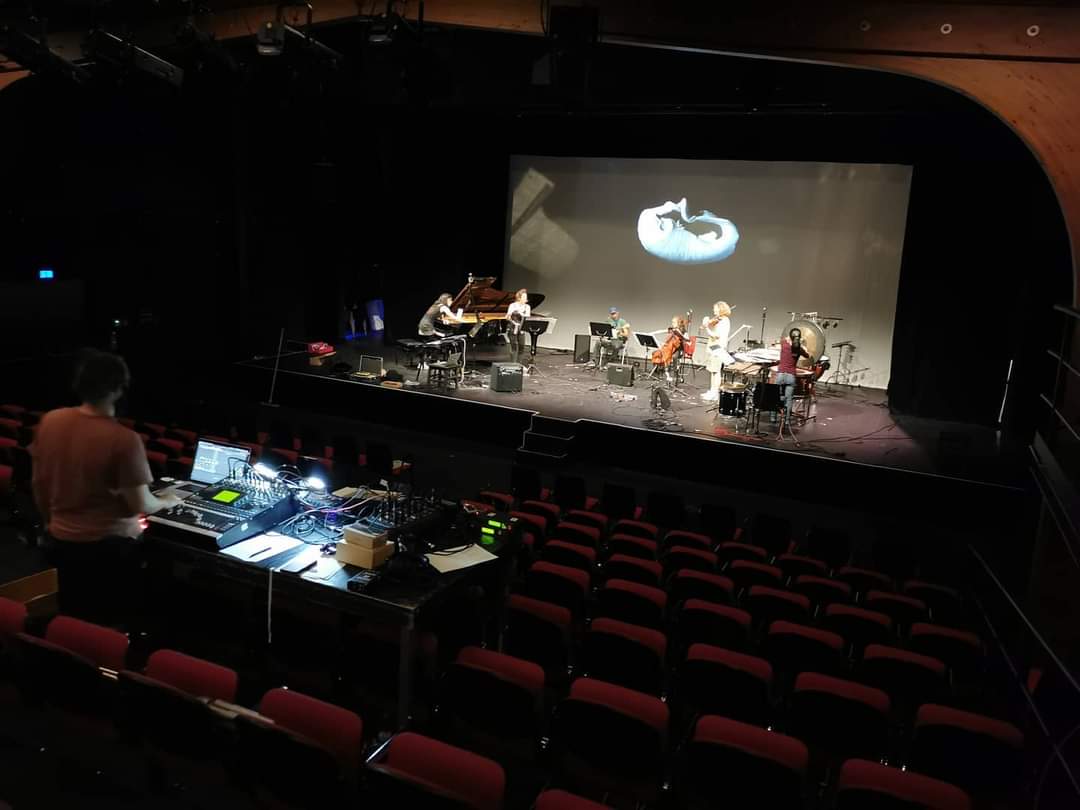

References
Darlene Ketten & Kate Madin, How to See What Whales Hear
Biomedical imaging reveals new insights into marine mammal ears, Oceanus, 2005 – https://www.whoi.edu/oceanus/feature/how-to-see-what-whales-hear/
Jen McWeeny, ‘Sounding Depth with the North Atlantic Right Whale and Merleau-Ponty: An Exercise in Comparative Phenomenology’
Journal for Critical Animal Studies, Volume IX, Issue 1/2, 2011.
Rebecca Giggs, ‘Whale Fall’, Granta Issue 133 ‘What Have We Done’ 2015 – https://granta.com/whale-fall/